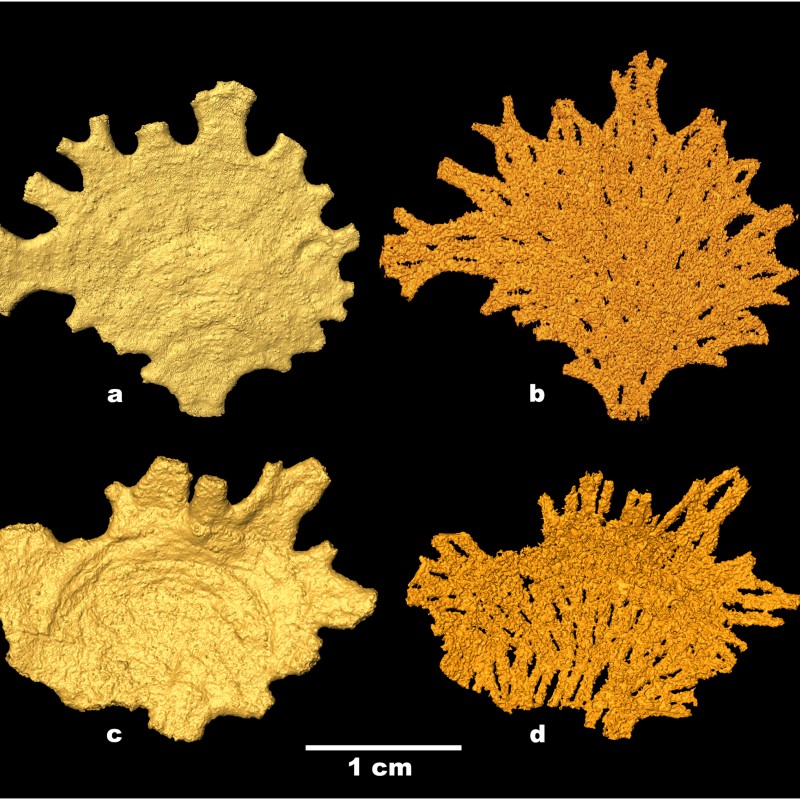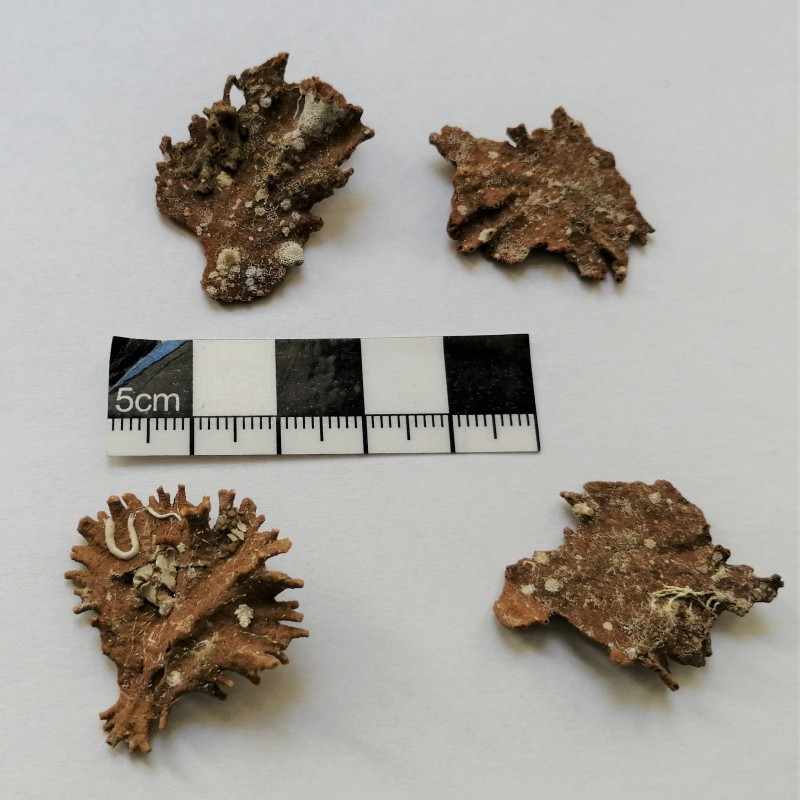Single-celled giants – the secrets of one of the largest foraminifera in the world
23. June 2022
In the nutrient-rich waters of the eastern Atlantic Ocean, there live remarkable testaceous single-celled organisms: the tests
of the foraminiferal species Jullienella foetida can reach sizes of up to 14 cm and play an important role within
their ecosystem. An international team of researchers including the NHM were now able to use modern analyzing techniques to
study the secrets and success of these special tests.
Foraminifera are single-celled protists that are
often covered by firm tests. So-called agglutinated foraminifera build these tests by gluing tiny sand- and mineral-particles
on their surface. Normally, foraminifera are only few millimeters in size, but a group of agglutinates can reach remarkable
sizes of several centimeters. Among them is Jullienella foetida, which occurs in shallow waters (up to 100 m
depth) along the western coast of Africa. When the first specimens were collected, a “foul-smelling odor” was noted, which
resulted in the name “foetida” – from the Latin word for “stinking”.
Several specimens of these curious foraminifera have now been analyzed by researchers from the University of Bonn, the Natural History Museum Vienna, the Egyptian Petroleum Research Institute, and the Natural History Museum London. They used Scanning Electron Microscope and X-ray images, as well as micro-CT-scans.
“These modern, three-dimensional images allow us to study the interior of the tests to understand how such large and yet stable tests are built”, explains NHM Vienna-scientist Dr. Anna Weinmann.
The images show that the tests contain internal partitions, which stabilize the outer test walls and at the same time canalize the cytoplasm. Some specimens also contained remains of this cytoplasm inside their tests. Such remains are probably the reason behind the described smell. With the aid of the images, it was possible to calculate the portion of the cytoplasm compared to the total test area and subsequently the estimated biomass.
“Our observations suggest that the biomass of Jullienella foetida is among the largest among today’s foraminifera”, says Prof. Dr. Martin Langer from the University of Bonn.
To build and maintain such a biomass, Jullienella foetida depends on appropriate food-sources. This might be the reason why it has so far only been found in the nutrient-rich coastal areas of the eastern Atlantic. Since there are almost no other frame-building organisms such as corals in these environments, Jullienella foetida probably provides the only common firm substrates that other organisms can settle on. In this way they play an important role for the diversity in the local ecosystem.
The results of the study were published in the research journal PeerJ.
Langer M.R., Weinmann A.E., Makled W.A., Könen J. & Gooday A.J. (2022) New observations on test architecture and construction of Jullienella foetida Schlumberger, 1890, the largest shallow-water agglutinated foraminifer in modern oceans. – PeerJ 10: e12884. https://doi.org/10.7717/peerj.12884
Video (in German):
https://youtu.be/y1lOt_Kb5Vg
Link to the 3D-model:
https://skfb.ly/ovzFp
Several specimens of these curious foraminifera have now been analyzed by researchers from the University of Bonn, the Natural History Museum Vienna, the Egyptian Petroleum Research Institute, and the Natural History Museum London. They used Scanning Electron Microscope and X-ray images, as well as micro-CT-scans.
“These modern, three-dimensional images allow us to study the interior of the tests to understand how such large and yet stable tests are built”, explains NHM Vienna-scientist Dr. Anna Weinmann.
The images show that the tests contain internal partitions, which stabilize the outer test walls and at the same time canalize the cytoplasm. Some specimens also contained remains of this cytoplasm inside their tests. Such remains are probably the reason behind the described smell. With the aid of the images, it was possible to calculate the portion of the cytoplasm compared to the total test area and subsequently the estimated biomass.
“Our observations suggest that the biomass of Jullienella foetida is among the largest among today’s foraminifera”, says Prof. Dr. Martin Langer from the University of Bonn.
To build and maintain such a biomass, Jullienella foetida depends on appropriate food-sources. This might be the reason why it has so far only been found in the nutrient-rich coastal areas of the eastern Atlantic. Since there are almost no other frame-building organisms such as corals in these environments, Jullienella foetida probably provides the only common firm substrates that other organisms can settle on. In this way they play an important role for the diversity in the local ecosystem.
The results of the study were published in the research journal PeerJ.
Langer M.R., Weinmann A.E., Makled W.A., Könen J. & Gooday A.J. (2022) New observations on test architecture and construction of Jullienella foetida Schlumberger, 1890, the largest shallow-water agglutinated foraminifer in modern oceans. – PeerJ 10: e12884. https://doi.org/10.7717/peerj.12884
Video (in German):
https://youtu.be/y1lOt_Kb5Vg
Link to the 3D-model:
https://skfb.ly/ovzFp




